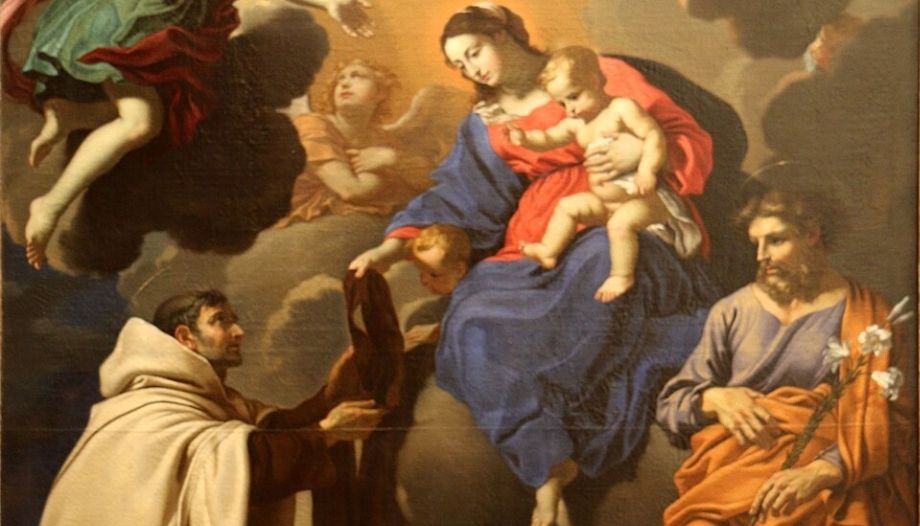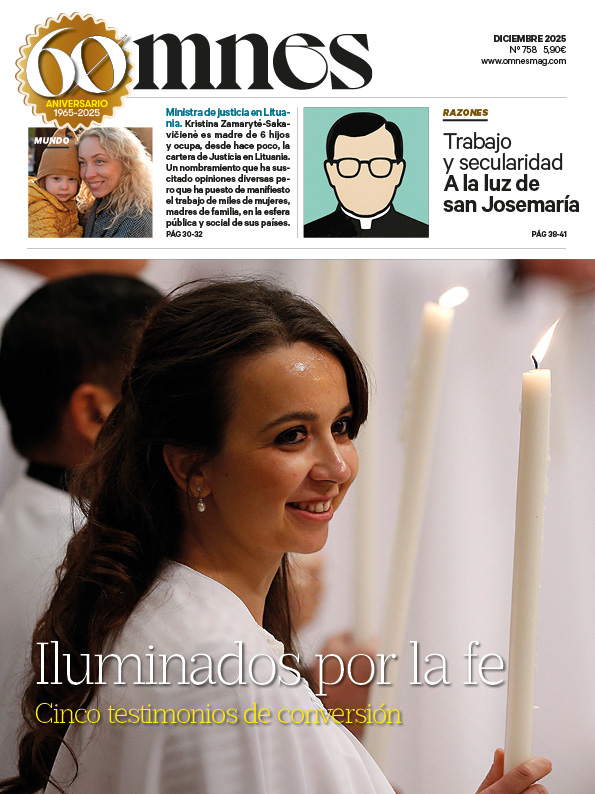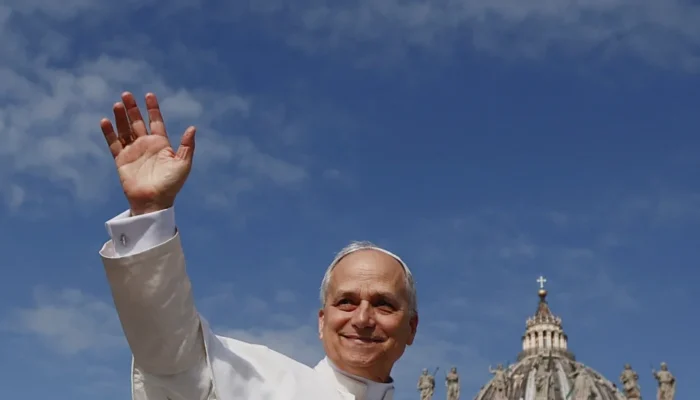One of the most popular invocations of the Virgin is undoubtedly that of Our Lady of Mount Carmel, the motherly and loving Virgin holding the Child Jesus in one of her arms while offering with her hand the holy Scapular.
Patroness of the Sea, of many towns and churches, patroness of the Order of Carmel and special advocate for those who are about to depart for the afterlife. But where did this title come from, this familiar and endearing icon, these ancient promises of salvation and assistance even for those in Purgatory?
Is it just a legend that is represented in so many pictures and images, which depict her among vaporous clouds, angels and flowers, handing the Scapular to an old Carmelite man with a gray beard? Or spreading her white cloak over a choir of friars and nuns dressed as their Queen and Patroness?
The prayer of St. Simon Stock
However, there is nothing more real than this Marian fact around which the whole history and spirituality of the Carmelites revolves. This singular and mysterious medieval Order, which arose, it is not very well known at what time or in what way, from an eremitical movement in the Holy Land, which began to take canonical form in the early thirteenth century, has its crowning moment in this sweetest scene.
A Superior General from England, Simon StockHe is worried and despondent about the future of his Order. He asks and begs the Virgin with a prayer that has become famous, to protect and protect his children:
Flos Carmeli - vitis florigera
Splendor coeli - Virgo puerpera singularis
Mater mitis - sed viri nescia
Carmelitis - da privilegia
Stella maris
What privilege did the venerable Superior ask for? That of being able to continue that profoundly contemplative way of life that existed since the beginnings of the Order. That of being able to remain faithful to the original charism in a canonically very complicated situation, which would have threatened the survival of Carmel. It is then that Our Lady responds, offering more than what was asked of her.
The holy Scapular
One of the best historians of the figure of S. Simon Stock She describes the scene as follows: "... To whom the Blessed Virgin appeared, assisted by a multitude of angels, carrying the scapular in her blessed hands. And she gave it to him saying: "This will be for you and for all Carmelites a grace: whoever dies with it will not suffer eternal fire. Send brothers to the Roman Pontiff Innocent, that I will return it to you favorably, and he will confirm your privileges....". (Ildefonso of the Immaculate, St. Simon Stock. Historical claim, p. 100. Valencia 1976).
But there is more. In the Carmelite Order, especially during the 14th and 15th centuries, there was a growing awareness of being, par excellence, the Order of Mary Most Holy. Great poets like Bautista Mantuano or Arnoldo Bostio. Theologians and writers such as John of Hildesheim, John Grossi, Thomas Bradley or John Paleonidore. Superiors and historians of the Carmelite Carmel put their thoughts and pens at the service of Marian devotion.
The great celebration of July 16
A devotion that little by little was concretized in the great feast of July 16, in which all the great previous tradition was gathered and given a new impulse. The feast of Mount Carmel was initially called the feast of "the benefits of Our Lady for her Order". Later it was called the feast of the Scapular. And finally, as we know it today: "Our Lady of Mount Carmel", whom the religious honored as Mother, Sister, Patroness, model, intercessor and the most precious jewel of their Order.
The multitude of physical and spiritual miracles worked by means of the holy Scapular (devotion that spread very soon and with great acceptance by the faithful people) made of this invocation, as we have said before, not only a beloved treasure of the Carmelites. It was also something truly ingrained in the heart of the People of God.
Devotion of St. Teresa of Jesus to Our Lady of Mount Carmel
There has been little study of the devotion of Saint Teresa of Jesus to the Virgin Mary. We should not be surprised, since in his writings the allusions he makes to Her are very scattered and a careful look is necessary to discover them.
However, the great Reformer of Carmel was not only a profoundly Marian soul, but a true theological place. Where the mystery of Mary is found with such richness, such a variety of nuances and in such a complete way that the Saint deserves a place of honor among the singularly Marian saints.
The recitation of the Rosary and a long etcetera.
The recitation of the Rosary, which he learned from the lips of his mother Beatriz de Ahumada. The mysteries and feasts of the Virgin, which are all related to some important event in her life. To consider Carmel as the Order of the Virgin in every little detail, are already an indication of this tender and deep devotion. In the blue and white shadow of the Immaculate Conception he manages to convert the priest of Becedas. On the day of the Assumption he receives three portentous mystical graces, two of them in relation to the Barefoot Reform; he likes to renew his profession on the feast of the Nativity of the Virgin... And so on and so forth.
The vision of Our Lady's protection
The Order of the Virgin, the houses or dovecotes of the Virgin, the habit of the Virgin or the Rule of Our Lady are habitual expressions in her. The mercy received in the primitive choir of St. Joseph of Avila, in which she sees the Virgin protecting the first community founded by her with her white cloak, is completely emblematic. It is perhaps the only time he refers to the Virgin of Mount Carmel, but not as the Virgin of the scapular. But as the one who guards in a very special way that first convent whose dwellers will have "a high degree of glory" (Book of Life 36, 24).
To cite a particularly expressive paragraph of her writings, this one from the Book of the Moradas can serve as a golden brooch. In it she places before the eyes of her nuns the Virgin as Patroness and ideal of their life:
"For you have such a good Mother."
"Your Majesty well knows that I can only boast of your mercy, and since I cannot cease to be what I have been, I have no other choice but to come to her and trust in the merits of her Son and of the Virgin, his Mother, whose habit I unworthily wear and you wear."
"Praise Him, my daughters, you are truly this Lady's, and thus you have no reason to reproach yourselves that I am wretched, since you have such a good Mother. Imitate her and consider how great the greatness of this Lady must be and how good it is to have her as Patroness, for my sins and my being what I am have not been enough to tarnish this Sacred Order in any way" (Third Moradas 1, 3).







